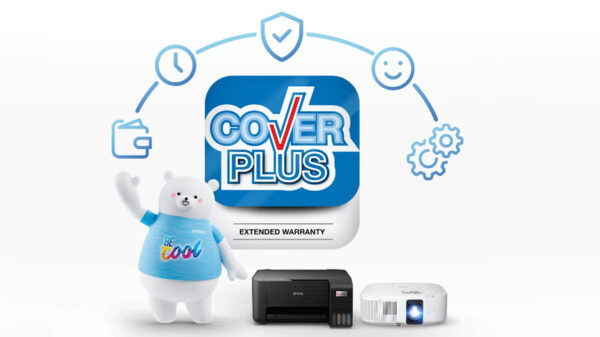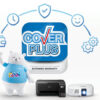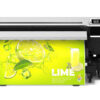Users who are thinking of acquiring a projector may now be able to compare and evaluate the color performance of projectors before buying one. A new specification, called Color Brightness, provides buyers information about the brightness of colors in projectors.
Aimed at driving public awareness on a global metric that could help customers get the most out of projectors they plan to purchase, the media briefing held at the Epson Philippines Corporation office in Pasig City focused on Color Light Output (CLO) which determines Color Brightness in projectors.
CLO, or simply Color Brightness is measured almost exactly the same way as “Brightness” or White Light Output, but instead of measuring white light, the primary colors (red, green and blue) are measured. The brightness of these colors are averaged, summed and multiplied by the screen area to determine the total amount of color brightness.
The metric was specifically developed to measure significant differences in color brightness performance among different projector models and brands to provide consumers with fair and accurate information.
Lumens, which measured brightness, tell little about the brightness of colors in pictures, videos or graphics. In contrast, the new metric gives projector buyers a measurement for the brightness of colors. In general, the higher the number of lumens, the brighter the projector. However, according to a recent study conducted by TFC Info Associates, more than 70% of projector buyers were not informed that the widely-used lumens specification measures only white light.
The briefing also demonstrated the importance of how color brightness of a projector maximize customer enjoyment of color-rich content now more easily accessible to home, commercial, business, and education sectors.
According to Amy Kwa, Epson Singapore Assistant Manager for Visual Instruments, in the past, when most images being projected in business and education were just text-based, the criterion in determining the capability of a projector is brightness, measured in lumens. This specification, however, measured only white light output.
However, with the advancement in technology, new specifications for projectors were developed to improve the product and at the same time satisfy users’ viewing experience. “Because of the influx of high-definition, color-rich media, white light output is simply not enough to convey the brightness story. Color light output, or simply color brightness can give customers the complete picture in getting the best projector performance,” says Kwa.
Color Brightness is critically important because color is a crucial component of picture quality. Even if a projector has high white brightness, its color brightness could be as low as 1/3 of its white light brightness specification. A projector with high color brightness produces vibrant, realistic colors but if the color brightness is low, colors can look dull and dark, skin tones can be poorly reproduced and important details can get lost.
Meanwhile, Epson has claimed that its LCD (liquid crystal display) projector which uses the 3LCD technology has up to three times brighter colors than its competitor, the one-chip DLP projector. The new technology utilizes a light engine with one LCD chip each for red, green, and blue primary colors to form a continuous image with quality colors. Conversely, the DLP projector uses a one-chip design with a color wheel to display sequential red, green and blue color.
The company’s proprietary 3LCD technology ensures that all Epson projectors provide the same level of brightness in white and color measured in lumens.
The 3LCD projectors efficiently use available lamp light to create stunning images. Compared with 1-chip projector, 3LCD uses, on average, 25% less electricity per unit of brightness. It also produces less heat and a filter is provided in every projector.
The 3LCD technology precisely controls the amount of light passing through the LCD chips producing smooth gradations that are free from banding and contour artifacts that can be displayed by 1-chip projectors.
Toshimitsu Tanaka, Epson Philippines Corporation President/Country Manager, claimed that Epson’s 3LCD technology has 24 years of road-tested reliability. “In addition to its many benefits, our global leading projector technology has also made it possible for all our projectors to provide the same level of Color Brightness and White Brightness.”
“This combination provides the ultimate viewing experience for our customers as it delivers bright, vibrant colors and true-to-life images essential for today’s digital content. We are glad to be among the pioneers in adopting and communicating Color Brightness as a vital specification in projectors, to support customers in making a more informed choice for their needs and requirements,” adds Tanaka.
CLO was established when the National Institute of Science and Technology (NIST) issued a paper on Color Brightness in 2009. Aside from the typical white light brightness rating of display devices, NIST stated that there was a need to provide “an equivalent measurement that will better describe a projector’s color performance when rendering fill color imagery.” Epson is among the pioneers in the industry which adopted the new CLO metric in communicating the performance of its projectors.
Tips for Customers: How to Find a Projector’s Color Brightness
1. Look for separate color brightness specification and white brightness specification.
2. Be vigilant! Many manufacturers may not want you to know their projectors are only1/3 as bright when measuring color.
3. Compare for yourself – If the Color Brightness measurement is not provided, or if you are curious to know the color brightness rating of a projector you already own, go to www. colorlightoutput.com. Hundreds of projector models have been independently tested.




















































































































